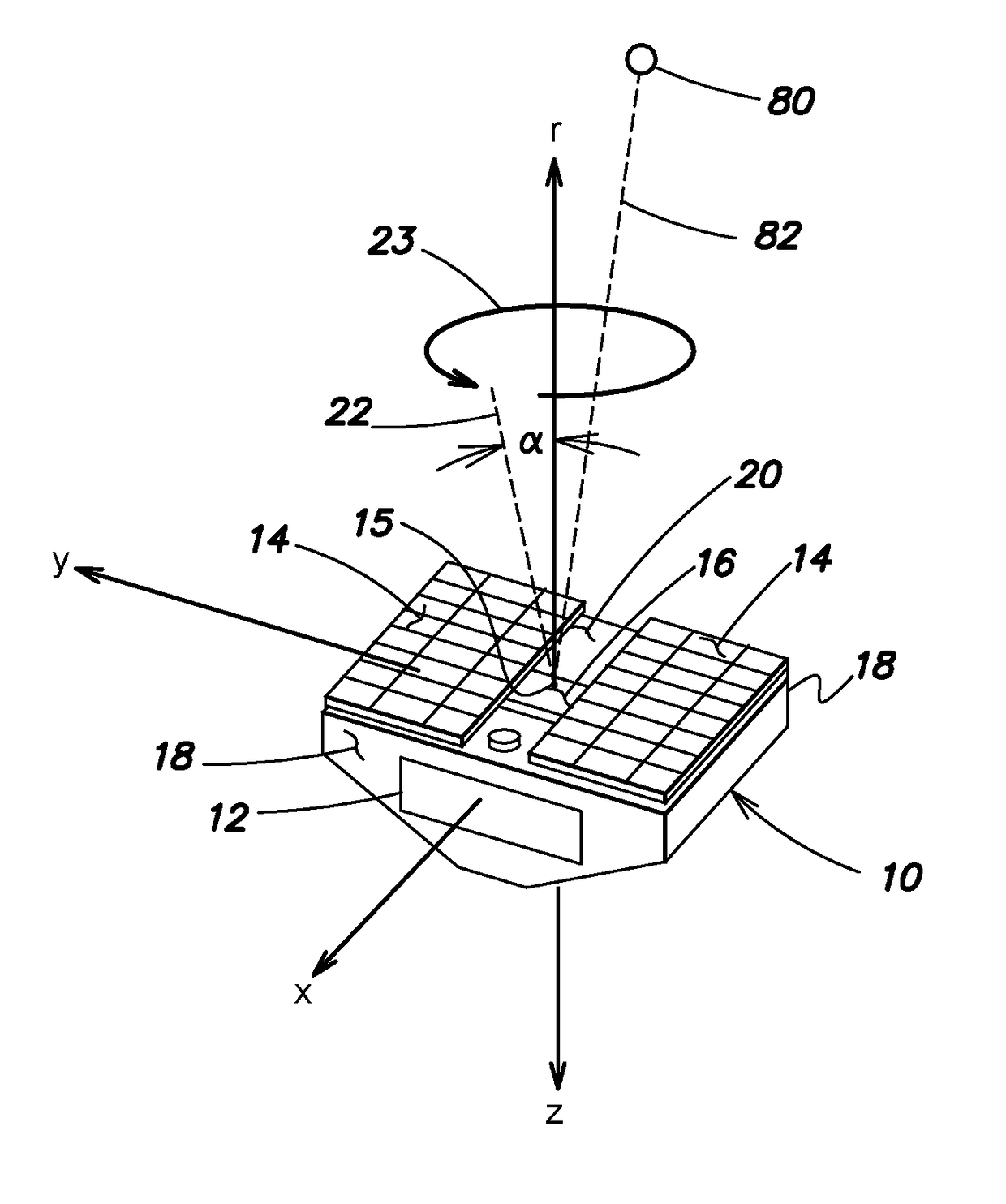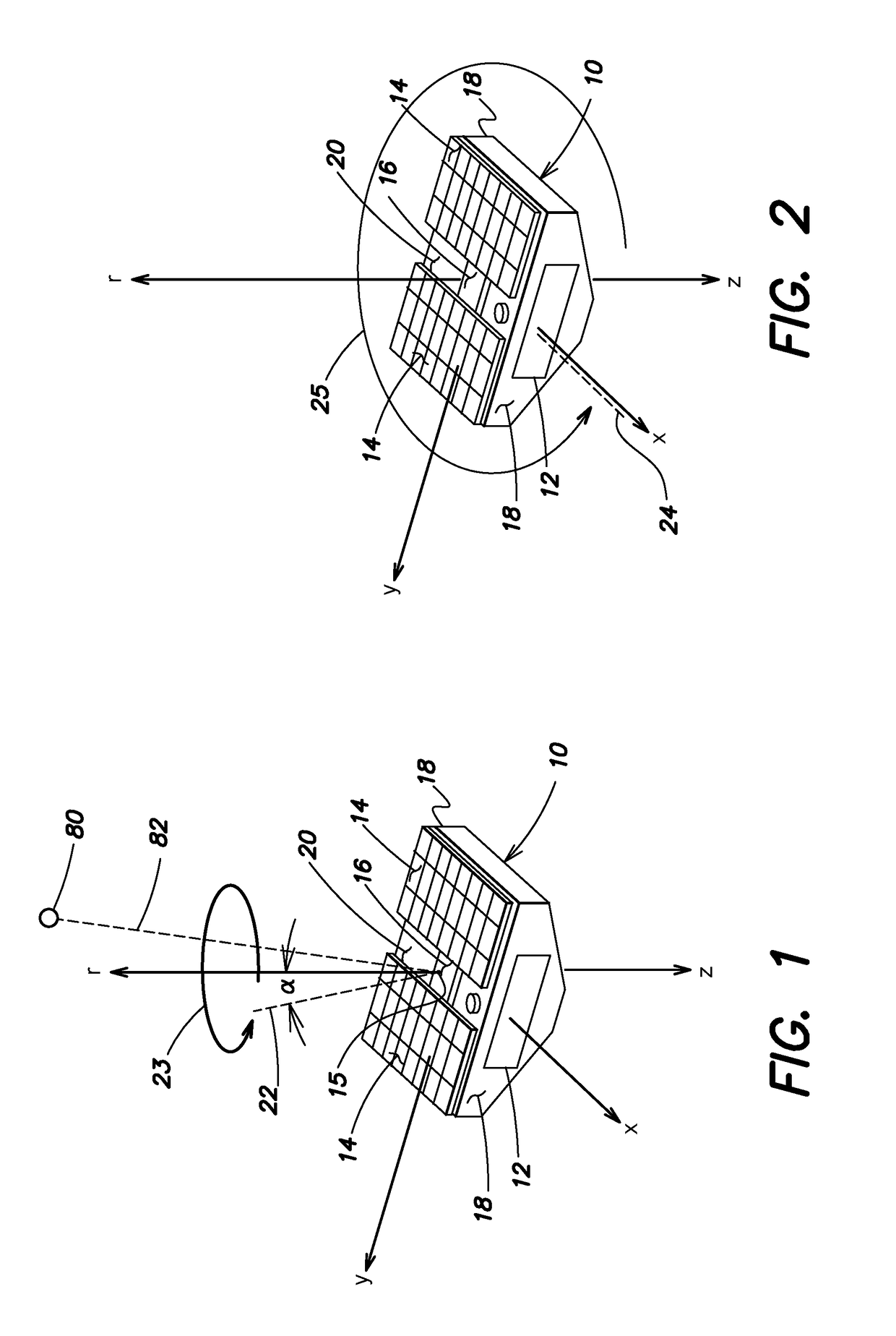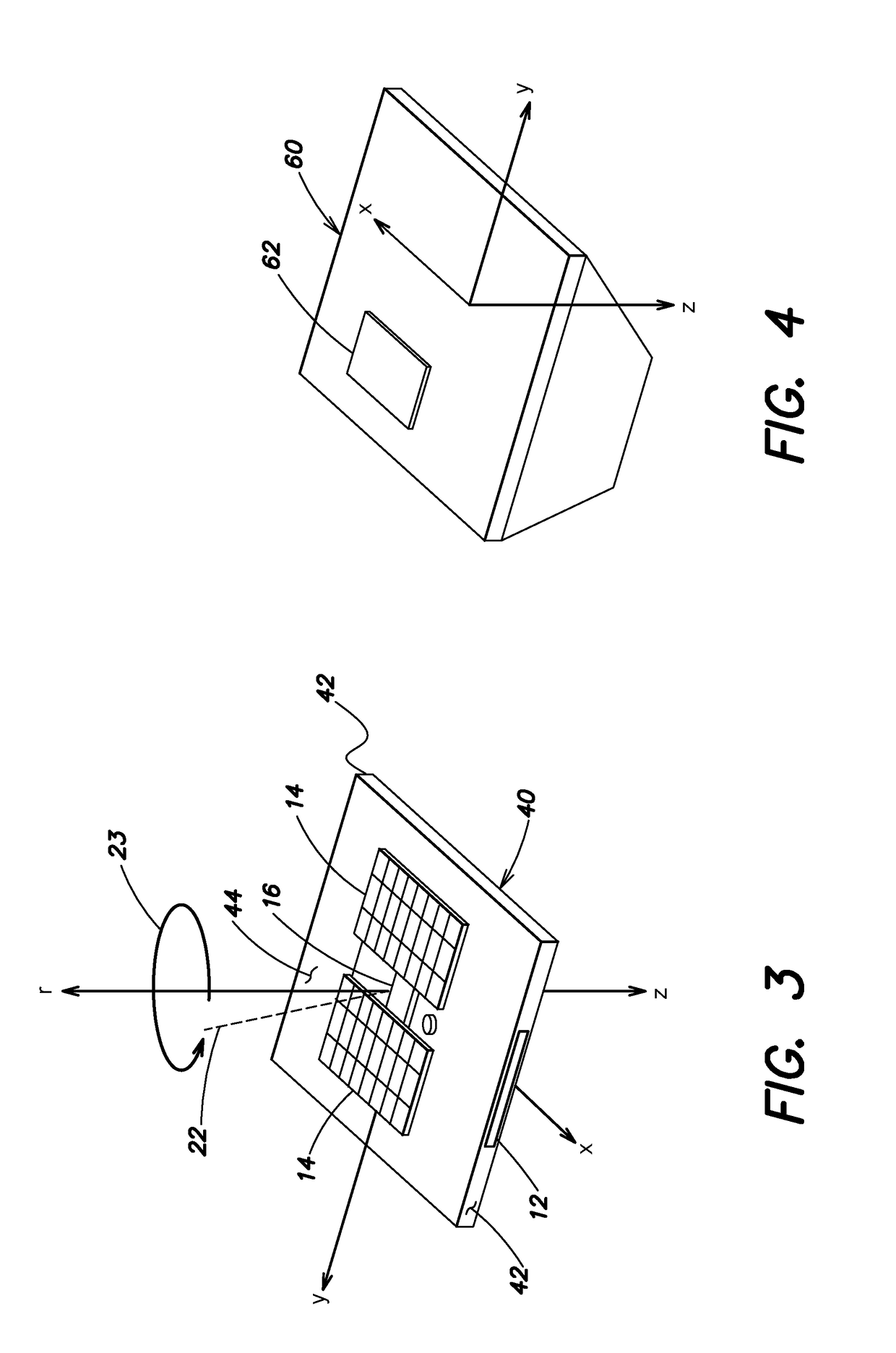Conical scanning process for spacecraft sun pointing
a scanning process and spacecraft technology, applied in the field of spacecraft sun search and pointing, can solve the problem that the process requires the use of relatively complicated sensors
- Summary
- Abstract
- Description
- Claims
- Application Information
AI Technical Summary
Benefits of technology
Problems solved by technology
Method used
Image
Examples
Embodiment Construction
[0035]Orienting a spacecraft towards the Sun has applications both to attitude acquisition following deployment of the spacecraft from a launch vehicle and to attaining a safe state of the spacecraft following an anomaly in orbit. Aspects and embodiments disclosed herein provide systems and methods for a spacecraft to locate and orient itself towards the Sun, or another energy or signal source, with source measurements provided only by incidence-angle sensors and / or presence sensors such as photocells. Such a sensor suite may not provide enough information to determine the instantaneous direction toward the source. However, certain embodiments include a process that commands a dynamically stable spacecraft maneuver which both simplifies the control architecture and allows the spacecraft processor(s) to construct an estimate of the source direction by tracking sensor measurements in a buffer. The process then drives the spacecraft to orient its sensors toward the source. For example,...
PUM
 Login to View More
Login to View More Abstract
Description
Claims
Application Information
 Login to View More
Login to View More - R&D
- Intellectual Property
- Life Sciences
- Materials
- Tech Scout
- Unparalleled Data Quality
- Higher Quality Content
- 60% Fewer Hallucinations
Browse by: Latest US Patents, China's latest patents, Technical Efficacy Thesaurus, Application Domain, Technology Topic, Popular Technical Reports.
© 2025 PatSnap. All rights reserved.Legal|Privacy policy|Modern Slavery Act Transparency Statement|Sitemap|About US| Contact US: help@patsnap.com



